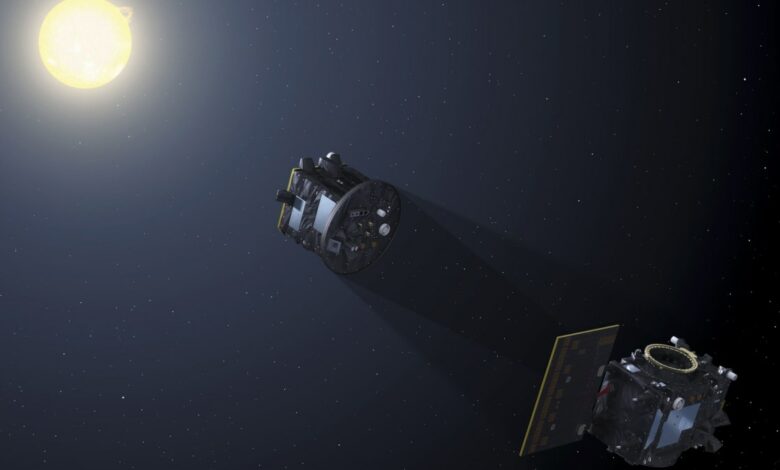ESA’s solar eclipse-causing Proba-3 Mmssion heads to India

ESA’s Proba-3 mission, designed to create solar eclipses in space to study the Sun’s corona, has officially left European soil and is on its way to its launch site in India. This two-spacecraft mission departed from the Redwire Space facility in Kruibeke, Belgium, to travel to the Satish Dhawan Space Center near Chennai, where final launch preparations will begin. The aim of the mission is to enable extensive observation of the Sun’s corona – something that is only briefly visible during natural eclipses on Earth – by creating an artificial eclipse in space.
Breakthrough in formation flying for solar energy research
Proba-3, a groundbreaking mission of the European Space Agency, consists of two spacecraft: the Occulter and the Coronagraph. These satellites will achieve formation flying with a precision that allows one satellite to cast a shadow on the other, creating the eclipse effect necessary for corona observation. According to ESA mission Manager Damien Galano took years of work to achieve this feat to ensure that the satellites can operate autonomously in formation with an accuracy of just one millimeter. The mission aims to provide unprecedented insights into solar phenomena by capturing detailed images of the Sun’s outer atmosphere.
Launch details and technical challenges
The Proba-3 mission will be launched on December 4 aboard India’s PSLV-XL rocket. This launch will place the spacecraft pair in a highly elliptical orbit ranging from 600 km to 60,000 km above Earth. Such an orbit is essential to ensure that the spacecraft formation can fly at altitudes where the pull of gravity is reduced, thus reducing fuel consumption. After an initial setback with air cargo arrangements, which required the spacecraft’s batteries to be shipped separately, the mission is now back on schedule.
Global cooperation and advanced technology
The Proba-3 mission drew on expertise from fourteen ESA member states and Canada. Led by Spain’s Sener and supported by Airbus Defense and Space, the project involved partners such as GMV and Spacebel, specialized in satellite navigation and software. Key instruments include the Belgian Royal Observatory’s ASPIICS corona imaging device and the Swiss Physical Meteorological Observatory’s DARA radiometer, designed to study yield of solar energy.
Pre-launch simulations underway
The final mission control operations will be conducted at ESA’s European Space Security and Education Center in Redu, Belgium. Rigorous simulations and training exercises are currently being conducted in preparation for the deployment and ongoing operations of Proba-3 in space, marking a major milestone in space-based solar observation.
For the latest tech news and reviews, follow Gadgets 360 X, Facebook, WhatsApp, Wires And Google News. For the latest videos on gadgets and technology, subscribe to our YouTube channel. If you want to know everything about top influencers, follow our in-house Who is that360 on Instagram And YouTube.

Realme GT 7 Pro camera samples revealed; Underwater Photography, Live Photos features confirmed
Earth’s temporary second moon, PT5, 2024 says goodbye as it leaves its orbit





